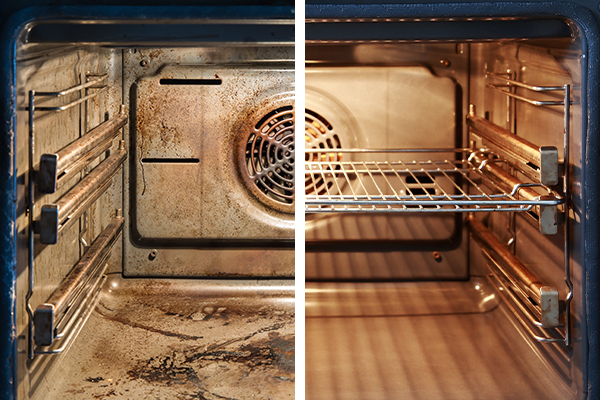What Is the Oven Self-Clean Feature?

Many newer ovens come with a built-in self-cleaning system that makes kitchen upkeep easier. While it’s convenient, certain situations can create issues—such as when older ovens are involved, when the appliance was installed without proper ventilation, or when the unit hasn’t been serviced regularly. In such cases, relying on this function may lead to expensive damage.
The process works by heating the oven to very high temperatures for several hours, reducing food splatters and grease to fine ash that can be easily wiped away. The length of the cycle varies, typically ranging from two to six hours depending on the model. Some ovens also include an alternative steam-clean option, which uses moisture and heat to loosen debris more gently.
How Does an Oven Self-Clean?
When the self-clean cycle is started, the oven raises its internal temperature to levels far above normal cooking heat, often exceeding 500°F. During this process, the door automatically locks for safety, and the extreme heat reduces grease, crumbs, and spills to a fine ash through oxidation. The cycle usually lasts several hours, and it’s not unusual for the oven to give off noticeable heat and even some smoke as the residue burns away. SD Appliance Repair. Once everything cools down, the light ash left behind can be quickly wiped out, restoring a clean oven interior with little effort.
How to Use Oven’s Self-Clean Feature
Running the self-clean cycle on an oven is a simple task that generally comes down to three basic stages. Here’s what the process looks like:
1. Prepare for the Cleaning
Prior to running the self-cleaning function, take everything out of the oven, including the racks, since the high heat can damage their finish or cause bending. It’s also a good idea to wipe away any large chunks of food or thick spills with a damp cloth to cut down on smoke once the cycle begins. Make sure the kitchen has good airflow, as the process can release some smoke, and for safety reasons, keep children and pets away until the oven has finished and cooled down.
2. Initiate the Self-Cleaning Cycle
In many newer ovens, the door secures itself automatically once the self-cleaning mode begins. If your appliance doesn’t have this feature, be sure to lock it by hand before starting. Next, follow the user guide to select the cleaning cycle—usually by pressing the self-clean control and choosing the desired run time. The length of the cycle depends on both the oven model and the amount of buildup inside. During this time, the oven will reach extremely high temperatures to burn away any leftover food and grease.
3. Perform Any Post-Cleaning Tasks
When the cleaning cycle finishes, allow the oven to return to room temperature before opening the door, which may take several hours. Inside, there will usually be a thin coating of ash left behind. SD Appliance Repair. This can be removed with a damp sponge or cloth. For tougher spots, a little gentle dish soap may help, but avoid using abrasive pads or strong chemicals that could harm the surface.
When to Use Your Oven’s Self-Clean Feature
There are a few situations where running the self-cleaning cycle can be especially useful:
- After intensive cooking: Following events like preparing a big family meal or holiday dinner, the oven often collects heavy grease and stubborn food residue. The self-clean mode can efficiently take care of this buildup.
- As part of routine care: Using the feature every few months—anywhere from three to six times, depending on how often you cook—can help maintain both cleanliness and performance.
- When buildup is obvious: If you see layers of grease, burnt food, or grime that aren’t coming off with simple wiping, the high-heat cycle can break it down and leave the oven easier to clean.
When NOT to Use Your Oven’s Self-Clean Feature
There are also situations where relying on the self-clean function isn’t the best idea:
- Right before an important occasion: Running a cycle just ahead of a big meal or gathering can be risky. The extreme heat puts strain on oven parts and, in some cases, may cause a malfunction. It can also create unpleasant odors that aren’t ideal when guests are around.
- For light messes: If the oven only has a few small spills, a quick manual wipe-down is more efficient and avoids unnecessary energy use.
- In poorly ventilated spaces: The process can generate smoke and fumes as it burns away residue. Without proper airflow in the kitchen, this could be uncomfortable or even unsafe.
- With older or problem-prone ovens: Appliances that are aging or already showing signs of wear may not handle the high temperatures well. Faulty latches, weak heating elements, or other issues can worsen, so it’s safer to stick to traditional cleaning methods in these cases.
You Appliance Will Be Fixed!
in San Diego, CA
REQUEST SERVICE
Book a Repair Appointment

